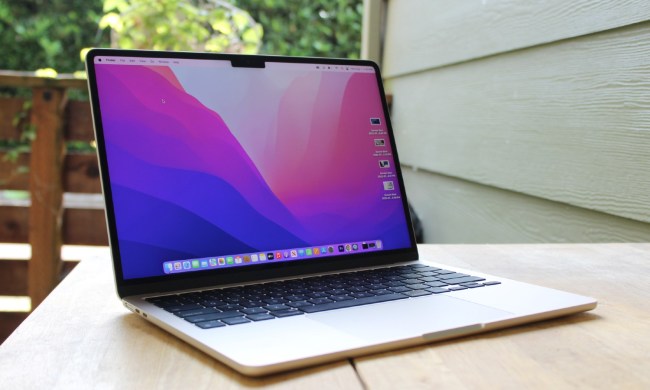I’ve been an iPad-as-a-computer guy ever since Apple put the M1 silicon inside the iPad Pro. Earlier this year, I dropped $1,800 and got the new iPad Pro with the whole accessory kit in tow.
I wish I had the patience to wait and pick the Asus ProArt PZ13 instead. In doing so, I would have saved myself a cool $800, enough to buy a decent laptop, or even the lovely M4 Mac mini for my desk, and lived in peace.
But more than the sheer punishment on my wallet, I wouldn’t have had to live with the frustrations of iPadOS computing on a day-to-day basis. The Asus ProArt PZ13, running the Arm flavor of Windows, proved to be a surprisingly reliable laptop disguised as a tablet.
The value conundrum

For any person investing in a tablet — and I am talking about the pricey ones — the intention is to get serious work done. The iPad Pro attracts an audience that predominantly indulges in graphics designing, sketching, casual media editing, and note-taking.
To get the most out of it, you need a stylus and a keyboard. In my case, labeling medical scans for a machine learning model and editing short-form vertical videos was a part of my workflow, apart from my daily reporting work.
Of course, I had to part ways with extra cash to get Apple’s pricey accessories. Between the iPad Pro kit and the Asus device, the price gulf is worth over $600 if I go all in with the workflow computing dreams. That’s not exactly pocket change.

Asus doesn’t burden its audience with an accessory tax. With the ProArt PZ13, you get the entire keyboard bundle and a reliable stylus — with physical buttons — in the retail package. And they have their own set of benefits over Apple’s peripherals.
While interviewing creative professionals for my Wacom Movink review, every single one of my expert sources preferred physical controls on their stylus over something like the Apple Pencil Pro.

The situation with the Asus Pen 2.0 (SA203H) is not too different, offering a total of three buttons with functional customization perks to go with it. The Asus stylus matches the sensitivity of the flagship Apple Pencil and comes with four interchangeable tips, as well.
I don’t need all those fancy features like barrel roll, nor do I dig too deep into the button customization side. So, for my work commitments, the Asus stylus was just as fine as the Apple Pencil Pro. As far as the keyboard goes, it’s a mixed battle.
The Magic Keyboard looks and feels fantastic, but it has a wobbling problem while using a stylus when the tablet is perched magnetically. The ProArt PZ13, thanks to its kickstand design, is rock solid on a table for touch and stylus inputs.
Plus, the kickstand offers noticeably more angular versatility than the adjustments allowed by the Magic keyboard. There is little to complain about the typing experience, either.
If you’ve experienced Microsoft’s Type Cover for the Surface tablets, you’ll feel right at home on the Asus package. It’s well-spaced, serves a decent amount of vertical travel, and offers more freedom with the function key row.

Furthermore, I can control and adjust the keyboard backlight on the Asus keyboard. The $329 Magic Keyboard doesn’t allow backlight on or off convenience. Yep, that’s how Apple rolls!
I just wish the Copilot button wasn’t there on the Asus keyboard. We deserve a Ctrl button, Microsoft! Why burden us mortals with the hassle of configuring it, now that you realize the folly?
Performance caveats
Apple armed the iPad with an M4 series silicon before the Mac, but simultaneously brought the worst of its computing portfolio to the tablet line. Unless you pay top dollar for the 1TB or higher storage version, you are getting an underpowered 9-core processor and 8GB of RAM.

Above that baseline, you can get the 10-core trim and double the RAM capacity. For creatives, especially folks dealing with media editing, even 512GB of onboard storage is barely enough to last a month of work.
The RAM is equally crucial, and it actually shows. I’ve run into my fair share of non-responsive Chrome windows in split-screen mode when Stage Manager is active on the iPad Pro. The Asus ProArt PZ13 won’t burden you with any of that costly dilemma.
It ships with 16GB of RAM — which even Apple now admits is the baseline capacity — and 1TB of storage. Paired with the Oryon core chops aboard the Snapdragon X Plus silicon, the Asus slate is as snappy as a tablet can get, even beating the MacBook Air with the M3 silicon inside.

Yes, there’s the whole x86 vs Arm debate around app compatibility on Qualcomm-powered Windows machines, and how a healthy few 32-bit legacy apps will likely never get a taste of the Prism emulation to run on machines like the Asus ProArt PZ13.
That’s a debate for another day.
Of course, there’s a performance hit when the x64 binaries are converted into the Arm instructions so that x86 apps can do their job aboard Windows on Arm machines. But the hit is not big enough to relegate these machines to the dreaded “enthusiast” class.
I was hoping that the emulation tax would be heavy. I was wrong, at least for my workflow. In Wondershare Filmora, the software handled multiple layers of animation and audio layers, with a healthy few effects and original animations interspersed across the timeline, quite well.

I was able to export a three-minute, Full HD, 60 frame-per-second piece of footage in roughly two minutes. For my workflow, that’s good enough to handle Reels and YouTube Shorts. My experience running Adobe Express and Firefly’s AI was smooth, aided by the onboard neural processing unit (NPU).
Next comes the question of compatibility. Adobe Photoshop, Lightroom, and Premiere Pro are already running natively. Illustrator and InDesign are also in the beta testing phase with native Arm compilation, and After Effects is next in line.
DaVinci Resolve is well on its way to getting Arm native, which is yet another massive leap. Blackmagic Design assures that when the DaVinci Neural Engine AI finally rolls out, the software will handle advanced edits like film tone grading and denoising with ease.
Of course, you’re not buying a tablet for heavy 4K video edits, but it’s still reassuring to see that one of the most versatile (and demanding) desktop-grade video editors will soon tap into the benefits of an AI accelerator to deliver some extra oomph.

But it’s not just the apps itself that are key to the computing experience here. It’s the whole experience built around it.
Value conundrum, or sheer extortion?
Windows on Arm, at the end of the day, is still Windows. And that means you have a full-fledged desktop experience, instead of the stretched-mobile hack that is essentially iPadOS.
Md Meharban, a multimedia journalist, tells me that despite the iPad’s sleek looks and fluid UI, it’s not a real computer. “I would pick a Windows machine over iPadOS any given day. For my ground assignments, the Asus tablet would be an easy pick.”

“It’s the OS flexibility and assured performance that matters to me,” adds Meharban, whose work has appeared at esteemed outlets like Reuters, The New York Times, and National Geographic, among others.
“A glorified mobile app simply won’t cut it for me.”
Arzoo, a fashion designer, also gave the Asus tablet a try. “The biggest problem with the iPad Pro is that it’s a fantastic slate, but not a computer. It demands a proper computer to handle the rest of my productivity demands,” she adds.
“The Asus tablet sounds like an all-in-one machine. It’s a bit thick, but I can overlook that if it gets the job done,” she adds. Her experience echoes my own dilemmas, where the limitations start at the most fundamental tier of my workflow.

This is what I wrote in my iPad Pro review:
“Unless you are a creative whose entire workflow revolves around tools like Procreate, Adobe Creative suite, or Logic Pro, a fleshed-out web browser is your lifeline. Safari just doesn’t cut it, and Chrome’s mobile version is unbearably devoid of features compared to the desktop version.
I can’t even use the most basic browser extensions on a $1,500 slate. Are you kidding me? WordPress is a test of patience that makes me want to punch a hole through the screen.”
The situation with iPadOS hasn’t improved a bit, to date. Not until Apple pulls off a magic trick that can redeem iPadOS overnight. The iPadOS-desktop redemption is not on the horizon, unfortunately.

The chances of Windows of Arm finally maturing into its destined form, however, are much better. The Asus ProArt PZ13 is just the right vehicle for those dreams.
All flash, lots of substance
A few weeks ago, my partner straight-up rejected watching movies on anything other than the M4 iPad Pro. She is far from a tech nerd or even a display purist when it comes to couch binge sessions. That’s just how good the iPad Pro’s OLED panel is.
The Asus ProArt PZ13, thankfully, didn’t meet any such resistance. I, too, don’t have any apprehensions about video editing or comparing dozens of smartphone camera samples on the Asus ProArt PZ13’s OLED panel.

It’s not as bright as the iPad Pro, but the 3K resolution yields it plenty of sharpness, and the color coverage is also wide enough. Moreover, the 16:10 aspect ratio, coupled with Windows 11’s excellent windowing system, makes it far better for multitasking than the iPad Pro.
Window scaling and resizing is a horrid experience on iPadOS, and that square-ish display format doesn’t help, either. Another functional win is the kickstand built into the rear magnetic cover.

You can use the Asus tablet without the keyboard attached, which makes it a better choice for not just desk-based chores but also for media consumption sessions.
The iPad Pro Pro would need a stand or a folio case to do the same if the Magic Keyboard is missing. The viewing angles are acceptable and the color reproduction is also vibrant on the Asus tablet’s OLED panel.
What truly sold me, however, was the battery life. The biggest reason I put my trust in a Mac for work-on-the-go is the per-charge mileage. With Windows laptops, I’ve never had to confidence to carry it to a cafe and get a whole day’s worth of work done.

The iPad Pro is not exactly stellar by those standards. The Asus ProArt PZ13 surpasses not only the Apple slate but a healthy few Intel-based laptops, as well, in my experience. It’s not quite breathing down the MacBook’s neck, but for my workflow, it made it a whole day.
That’s exactly what I need from a machine. It’s also the highest Windows has reached with a tablet, and I can’t wait to see what the second-gen Qualcomm silicon brings to the game.
As for the Asus ProArt PZ13, it’s a fantastic, low-on-compromise tablet that punches far above the iPad Pro on productivity metrics.
Your turn now, Nvidia!



